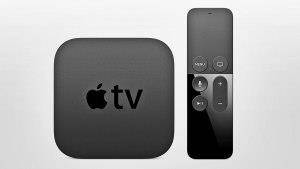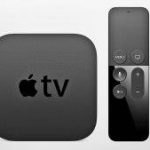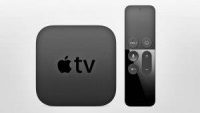For Apple TV, The Price Is The Problem
To understand Apple TV’s struggles, it’s instructive to look at the Roku Express.
Roku’s humble $30 streaming TV device is mediocre at best. It stutters and lags while moving through menus and apps, its single-band wireless connection is a generation old, and its remote control uses clunky infrared technology that requires a clear line of sight to the box. Given that Roku’s Streaming Stick eliminates all those problems for just $20 more, it’s hard to imagine many people buying the Express instead.
Yet Roku is having no trouble selling its cheapest streaming device. In its recent IPO filing, Roku said the Express drove a 37% year-over-year increase in device sales during the first half of this year. Devices under $50 now make up more than two-thirds of Roku’s U.S. sales, and the company’s average selling price is down to $47 in the United States, according to the NPD Group.
At $150, the current Apple TV costs more than three times what people pay for a Roku player on average. But while Apple’s streaming box is miles ahead of the Roku Express in performance and polish, the experience isn’t much different once video starts rolling in an app like Netflix. That may explain why Apple TV is bleeding market share to Amazon and Roku. People just don’t have much incentive to pay a premium for a streaming box.
Next week, Apple is rumored to announce a 4K HDR Apple TV, which should at least help the company reach feature parity with its competitors’ streaming boxes. But don’t expect the new format alone to drive a turnaround in market share. For Roku, the $75-and-up price categories that includes its Premiere+ and Ultra 4K HDR players only makes up 22% of sales, according to NPD. And while Amazon has offered a 4K Fire TV box since 2015, the cheaper stick has only gained share since then.
The notion that Apple must respond to low-cost competitors with its own cheap products is one of the most banal arguments in tech punditry, and Apple is usually wise to ignore it. But the business model that has worked so well for the iPhone, iPad, and Mac–differentiated software enabled by premium hardware–doesn’t translate to the streaming TV business, where content is king. Without either drastically lower prices or a breakthrough advantage in content, the Apple TV will continue to struggle.
A Stingy Set-Top Market
Roku isn’t the only one whose sales are dominated by cheap hardware.
In late 2014, Amazon launched the Fire TV Stick for $40. Compared to the $100 Fire TV box that launched earlier that year, the Stick had significant performance hiccups, and the first version of its remote control didn’t support voice commands.
But again, consumers didn’t mind. Within a year, Amazon’s stick was outselling its box 3 to 1, according to Parks Associates. A spokeswoman for Parks says the Fire TV Stick now makes up 81% of all Amazon Fire TV devices owned in U.S. broadband homes.
The success of cheap streaming TV devices is now having a profound impact on the Apple TV business. Both Parks Associates and ComScore show Apple TV in fourth place among U.S. broadband customers, behind Roku, Amazon Fire TV, and Google’s Chromecast.
Apple isn’t just a victim of low-cost competitors, though. According to The NPD Group, the company’s tailspin began in fourth quarter 2015 with the launch of its fourth-generation Apple TV, which at $150 is pricier than its predecessor, as well as anything offered by Amazon, Roku, or Google. At the time, Apple made up 32.3% of U.S. streaming device sales, excluding Amazon’s Fire TV devices (which NPD doesn’t track). Since then, Apple’s share has consistently slipped, and now sits at 13.5%. And the biggest quarter-to-quarter decline came in fourth quarter 2016, when Apple discontinued the older Apple TV that it had been selling for $69. For Apple, the damage was at least partially self-inflicted.
Content Conquests
The natural rebuttal to these figures is that Apple isn’t overly concerned with market share, so long as it can hold the premium end of the market and maintain a vibrant ecosystem for apps and services.
On the ecosystem side, Apple TV is doing fine. It’s not starving for any major streaming services (except for Amazon Prime Video, which is coming), and it’s been among the initial launch platforms for several new streaming video apps, including Hulu, with Live TV, DirecTV Now, Twitter, and Facebook. Because Apple’s developer tools are powerful, and its customers have a reputation for spending more money, streaming providers may be willing to support the platform even as its market share sinks.
Still, it’s unclear if the premium end of the market is holding up. In January, Apple CFO Luca Maestri told the Financial Times that Apple TV’s 2016 holiday sales declined year-over-year. That was one of the reasons why revenue in Apple’s “other” product category–which also includes iPods and standalone Mac displays–fell by 8% in an otherwise record quarter.
Either way, weak market share gives Apple less leverage to accomplish what it really wants, which is to reinvent TV. The company reportedly walked away from trying to build a streaming TV bundle in 2015, and more recently has butted heads with studios over the price of 4K HDR movie purchases. As Recode’s Peter Kafka has pointed out, Apple used to win these kinds of content battles, but Hollywood studios have little incentive to budge when most streaming TV watchers are using Rokus, Fire TVs, and Chromecasts. Launching a live TV bundle still seems like Apple’s best shot at widespread success, but getting the channels and prices it wants might be easier with more market share.
All of this means that Apple has a tough decision ahead: The company could join Roku, Google, and Amazon in offering the cheaper hardware that consumers overwhelmingly prefer, or it can accept a life of low market share and the reduced bargaining power that goes with it. All available data shows a slim chance of Apple having it both ways.
Fast Company , Read Full Story
(51)








